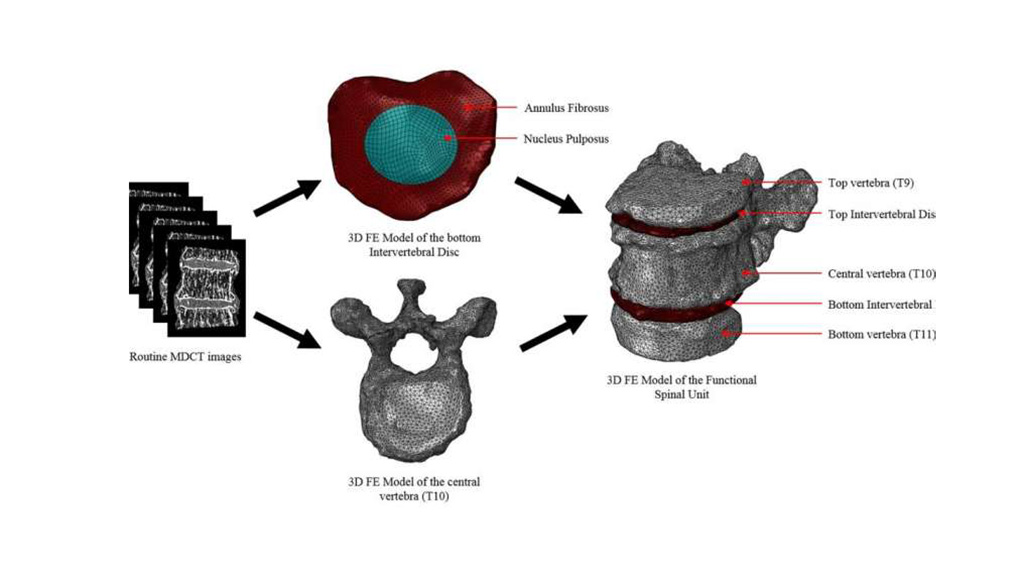Finite Element Analysis Helps Predict Spinal Fractures
By MedImaging International staff writers
Posted on 01 Jan 2020
A new study introduces a novel vertebral strength assessment tool that can assist accurate prediction of osteoporotic vertebral fracture (OVF) risk.Posted on 01 Jan 2020
Developed at the Singapore University of Technology and Design (SUTD) and Munich Technical University (TUM; Germany), the semi-automatic computational tool is designed to extract structural information, such as failure load, from radiological scans of patients using functional spinal units (FSUs). The calculated FSU predicted failure load was compared to the bone mineral density (BMD) values of the single central vertebra with experimentally measured failure load in order to assess finite element (FE) correlation.

Image: Finite analysis can help determine cervical bone strength (Photo courtesy of SUTD)
To do so, the FSUs underwent clinical multi-detector computed tomography (MDCT), and BMD was then determined for the FSUs from the MDCT images of the central vertebrae. FE-predicted failure load was then calculated in the single central vertebra alone, and the entire FSUs. The results revealed that while BMD of the central vertebrae correlated significantly with experimentally measured failure load, the FE-predicted failure load of the central vertebra showed no significant correlation. However, FE-predicted failure load of the FSUs best predicted experimentally measured failure load. The study was published on December 10, 2019, in Spine.
“There is an urgent need to implement computational biomechanical analysis in the clinical scenario, since it is a powerful tool for non-invasive evaluation of bone strength,” said senior author Subburaj Karupppasamy, PhD, of the SUTD Medical Engineering and Design (MED) laboratory. “Accordingly, this work lays the foundation towards extracting valuable structural information from improved spine models, such as FSUs, in the diagnosis of osteoporosis and prediction of OVFs.”
Computational prediction of failure load through numerical simulation, known popularly as FE analysis, is a non-invasive tool for examination of the spine, which also provides a holistic quantitative evaluation of bone strength. As the spine consists of many different spinal segments, it is essential to include these all load-bearing segments when considering the structural strength of spine. FSUs have the advantage of mimicking the biomechanical requirements of the spine better than each isolated vertebral segment.
Related Links:
Singapore University of Technology and Design
Munich Technical University














